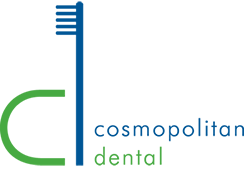Our office is equipped with the latest dental technology to best serve our patients. Learn more below about these recent technological breakthroughs.
Digital X-Rays

Digital radiography utilizes computer technology and digital sensors for the acquisition, viewing, storage, and sharing of radiographic images. It offers several advantages over the older traditional film based methods of taking x-rays. The most significant of theses advantages is that digital radiography reduces a patient’s exposure to radiation. Other benefits are that images can be viewed instantly after being taken, can be seen simultaneously as needed by multiple practitioners, and can be easily shared with other offices. Digital x-rays are also safer for the environment as they do not require any chemicals or paper to develop.
An electronic pad, known as a sensor is used instead of film to acquire a digital image. After the image is taken, it goes directly into the patient’s file on the computer. Once it is stored on the computer, it can be easily viewed on a screen, shared, or printed out.
Soft Tissue Diode Laser

The development of dental laser technology represents one of the most significant advances in modern dentistry. Today, dental lasers are being increasingly used to treat tooth decay, periodontal disease, to perform biopsies or remove oral lesions, to cure restorative (filling) materials, as well to activate in-office teeth whitening systems. Laser systems known as, “all tissue lasers,” can perform clinical procedures on both hard and soft tissues.
Dental lasers combine laser energy with water and air to safely cut and shape target soft or hard tissues in the mouth. Laser energy precisely cuts through tooth structure by exciting the water molecules in the tooth. It operates without direct contact to the tooth and without heat, vibration, or pressure thereby minimizing the discomfort of the procedure and the need for dental anesthesia. In addition, dental lasers can reduce anxiety for patients fearful of dental work, minimize post-operative bleeding and swelling, and preserve healthy tooth structure during the removal of decay.
While dental lasers may be an excellent treatment option in some situations, they cannot be used for every dental procedure.
CEREC Single Visit Crowns

Cerec is an advanced dental technology, which allows for the preparation and placement of same day ceramic restorations. Offering the utmost in terms of quality and convenience, this high-tech system eliminates the need for multiple dental visits, temporary crowns, as well as messy dental impressions.
Using the Cerec method, the tooth to be crowned is scanned, a restoration is digitally designed and then a permanent ceramic restoration is precisely milled in the dental office on that very same day.
The process utilizes CAD/CAM technology, or computer aided design and computer aided manufacturing. A Cerec single visit crown offers much more than a convenient approach to getting a dental crown. It is a high quality, naturally beautiful and extremely durable, permanent dental restoration.
Intraoral Camera

An intraoral camera is a miniaturized camera that can take high-resolution images inside of the mouth and display them for viewing in real time on a computer screen. It is a pen-sized device that provides an up close, full-color and high-resolution view of the teeth and surrounding soft tissues.
An intraoral camera is a wonderful communication tool that allows the dentist to directly show a patient a close up view of every tooth and the nearby soft tissues. With this technology any areas of concern can be instantly displayed and discussed.
The intraoral camera can also capture individual images that can be saved as part of a patient’s permanent record. These saved images can be reproduced when needed for use by other dental specialists, a dental laboratory, insurance companies, and others.

 30 East 40th Street, Suite 1001
30 East 40th Street, Suite 1001